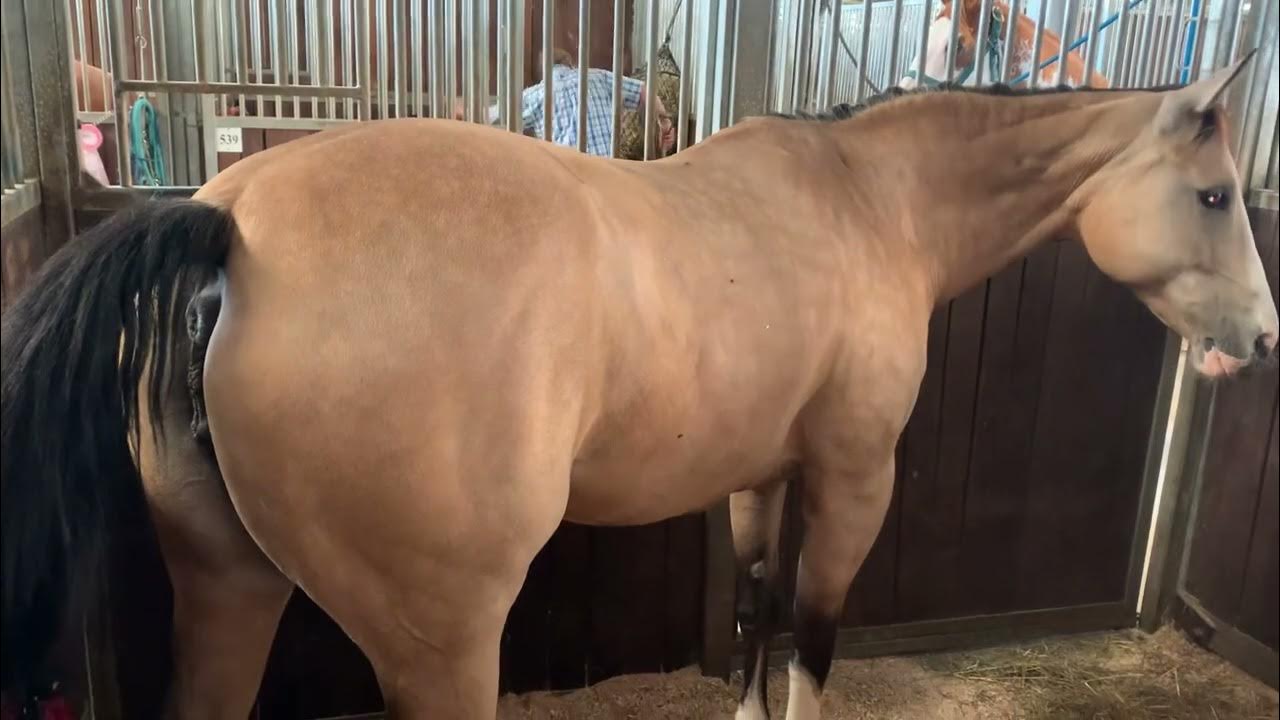The world of horses is filled with remarkable behaviors, and one of the most enigmatic is the phenomenon known as "mare winking." This fascinating action, often observed in female horses, has sparked curiosity among horse owners, trainers, and enthusiasts alike. Mare winking refers to the deliberate opening and closing of a mare's vulva, often perceived as a form of communication or signaling in the equine world. Understanding this behavior requires a closer look at equine body language, reproductive signals, and the social interactions that occur within horse herds.
Mare winking is particularly prominent during the estrus cycle, when mares are in heat and ready to mate. However, this behavior is not solely limited to mating rituals. It can also serve various other purposes, including establishing social hierarchies or communicating with other horses. By exploring the reasons behind this intriguing behavior, we can gain valuable insights into the complex world of equine communication and social dynamics.
In this article, we will delve into the various aspects of mare winking, including its biological significance, how it differs from other equine behaviors, and the interpretations put forth by experts in the field. Whether you are a seasoned horse owner or simply fascinated by the natural world, understanding mare winking can enhance your appreciation for these magnificent creatures.
What is Mare Winking?
Mare winking is defined as a rhythmic opening and closing of a mare's vulva, often accompanied by other body language signals. This behavior typically occurs during estrus, a period when a mare is fertile and receptive to breeding. However, not all instances of winking are related to mating; sometimes, it can indicate comfort or relaxation among herdmates.
Why Do Mares Wink?
The primary reason for mare winking is to signal readiness for mating. When a mare is in heat, she may display this behavior to attract stallions and indicate her willingness to breed. Additionally, winking can serve to communicate her status to other mares in the group, establishing social hierarchies and relationships.
Is Mare Winking a Reliable Indicator of Estrus?
While mare winking is a common sign of estrus, it is not the only indicator. Other behaviors, such as increased urination, vocalizations, and a change in posture, may also occur during this time. Therefore, observing a combination of these signs is crucial for accurately determining a mare's reproductive status.
How Does Mare Winking Compare to Other Equine Behaviors?
In the equine world, communication is key, and various behaviors serve different purposes. While mare winking is specific to females, stallions may exhibit their own unique behaviors to signal interest in a mare. Understanding these differences helps us appreciate the intricate language of horses.
Can Mare Winking be Misinterpreted?
Absolutely! Mare winking can sometimes be misinterpreted by observers, especially those unfamiliar with equine behavior. For instance, a mare may wink while simply feeling comfortable or relaxed, which may lead to incorrect assumptions about her reproductive status. It is essential to consider the context and other accompanying behaviors to avoid misinterpretation.
What Should Horse Owners Know About Mare Winking?
Horse owners should educate themselves about mare winking and its implications for breeding and health management. Understanding the signs of estrus can help in planning breeding schedules and monitoring the overall well-being of the mare. Additionally, awareness of this behavior can foster better communication between horse and handler, ensuring a harmonious relationship.
What Are the Biological Factors Behind Mare Winking?
Biologically, mare winking is linked to the estrous cycle, which is regulated by hormones such as estrogen and progesterone. During estrus, the increase in estrogen levels can trigger the winking behavior as a means of attracting potential mates. This hormonal influence is a vital aspect of mare reproduction and behavior.
Are There Any Health Concerns Related to Mare Winking?
While mare winking is generally a normal behavior associated with estrus, any sudden changes in frequency or accompanying symptoms such as discharge or discomfort should be evaluated by a veterinarian. These could indicate underlying health issues that require attention.
How Can Understanding Mare Winking Enhance Human-Horse Relationships?
By recognizing and interpreting mare winking, horse owners and handlers can develop a deeper bond with their equine partners. Understanding this behavior allows for more effective communication and training, creating a positive environment for both horse and handler.
Mare Winking: A Fascinating Aspect of Equine Life
Mare winking is a captivating behavior that contributes to our understanding of equine communication and social dynamics. By observing and interpreting this behavior, horse owners can enhance their relationships with mares and foster a more profound appreciation for these magnificent animals. Whether for breeding purposes or simply to enrich the bond between horse and handler, knowledge of mare winking is a valuable asset in the equine world.
| Personal Details | Bio Data |
|---|---|
| Name | Equine Communication Expert |
| Field of Expertise | Equine Behavior and Training |
| Years of Experience | 15+ |
| Publications | Numerous articles on equine behavior |
| Contact | info@equinebehavior.com |
In conclusion, mare winking is not just a simple act; it is a complex behavior that reveals much about the social and reproductive lives of mares. By observing this behavior closely, we can gain insights that not only enhance our understanding of horses but also improve our interactions with them.
Unveiling The Journey Of Anna Maligoshik: A Rising Star
Unveiling The Enigma Of Glenny Balls: A Journey Through His Life And Impact
Discovering The Enigma Of Emma Grace: A Journey Through Her Life And Achievements


